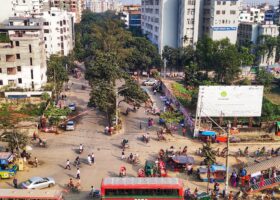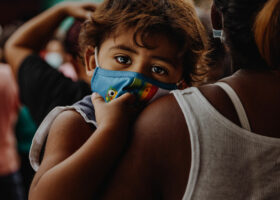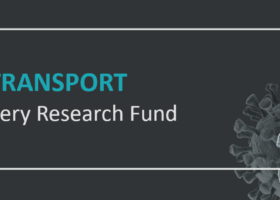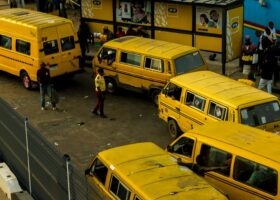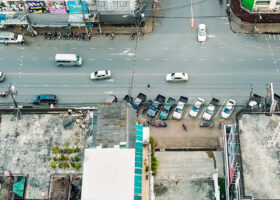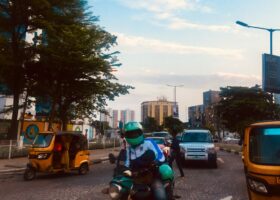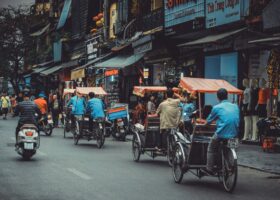Overview
The urban transport sector is at the heart of the current COVID-19 pandemic – as a vital service for health and other key workers, who have to get to their workplaces.
Therefore, it is crucial to provide a coordinated, science-based response from all levels of government to maximise the best possible public health outcome with the least economically damaging impact for all.
While every country is challenged with its own specific problems, there are some common challenges for the continent, when it comes to urban transport:
• Public transport is needed to ensure movement for key workers (health, essential services, etc.) and population’s access to medical facilities and food stores.
• Public transport systems feature significant use of small vehicles with limited internal space, reliant on high passenger numbers to be viable. COVID-19 may spread through transport use (high number of people in vehicles, congested terminals, no opportunity to identify sick people, variety of common surfaces).
• The fragmented nature of minibus operations and slim margins often may not allow for additional expenditures, e.g. for disinfectants and personal protective equipment.
• Operators may have incentives to compensate for lower occupancy required as part of the COVID-19 response by increasing fares for passengers.
• Public transport is part of the urban food supply chain that links traders to market and food to neighborhoods while households stay at home. In Nairobi, 97% of women surveyed reported concerns about access and affordability of food due to COVID-19 measures.
1 • Public transport – formal and informal – provides employment and livelihoods for many.
• Providing stimulus packages and financial support to informal public transport is challenging for public authorities because of its fragmented nature.
• Walking and cycling are currently the safest options to avoid exposure to the virus.
However, there is insufficient dedicated safe road space and often no dedicated cycling infrastructure. Moreover, weak urban planning often results in long journeys for basic needs.
• The existence of very dense informal settlements, that lack basic services and amenities, may increase the spread of the virus and requires specific mobility solutions.
• Limited levels of technology penetration within the urban economy in many countries prevent people from limiting travel for work and engaging in cashless payments or money transfers.
Most information, policies and guidance that are currently available and can be defined as good practice originate from the global North and are not always applicable to the situation in African countries. This note suggests a common policy framework for national government stakeholders to consider in raising awareness and initiating a policy dialogue around solutions for the urban mobility sector. It should be acknowledged that each city and each state has to build its own specific set of policies and regulations, so national solutions are recommended.
Publications with the same themes
Publications with the same study countries
Related news & events
News
News
News
News
Blog
News
Blog
PDF content (text-only)
COVID-19 URBAN TRANSPORT RESPONSE: OPPORTUNITIES FOR POLICY-MAKING IN AFRICA Holger Dalkmann and Jeff Turner May 2020 COVID-19 Urban Transport Response - Opportunities for Policy-making in Africa BACKGROUND: CURRENT CHALLENGES The urban transport sector is at the heart of the current COVID-19 pandemic – as a vital service for health and other key workers, who have to get to their workplaces. Therefore, it is crucial to provide a coordinated, science-based response from all levels of government to maximise the best possible public health outcome with the least economically damaging impact for all. While every country is challenged with its own specific problems, there are some common challenges for the continent, when it comes to urban transport: • Public transport is needed to ensure movement for key workers (health, essential services, etc.) and population's access to medical facilities and food stores. • Public transport systems feature significant use of small vehicles with limited internal space, reliant on high passenger numbers to be viable. COVID-19 may spread through transport use (high number of people in vehicles, congested terminals, no opportunity to identify sick people, variety of common surfaces). • The fragmented nature of minibus operations and slim margins often may not allow for additional expenditures, e.g. for disinfectants and personal protective equipment. • Operators may have incentives to compensate for lower occupancy required as part of the COVID-19 response by increasing fares for passengers. • Public transport is part of the urban food supply chain that links traders to market and food to neighborhoods while households stay at home. In Nairobi, 97% of women surveyed reported concerns about access and affordability of food due to COVID-19 measures. 1 • Public transport – formal and informal – provides employment and livelihoods for many. • Providing stimulus packages and financial support to informal public transport is challenging for public authorities because of its fragmented nature. • Walking and cycling are currently the safest options to avoid exposure to the virus. However, there is insufficient dedicated safe road space and often no dedicated cycling infrastructure. Moreover, weak urban planning often results in long journeys for basic needs. • The existence of very dense informal settlements, that lack basic services and amenities, may increase the spread of the virus and requires specific mobility solutions. • Limited levels of technology penetration within the urban economy in many countries prevent people from limiting travel for work and engaging in cashless payments or money transfers. Most information, policies and guidance that are currently available and can be defined as good practice originate from the global North and are not always applicable to the situation in African countries. This note suggests a common policy framework for national government stakeholders to consider in raising awareness and initiating a policy dialogue around solutions for the urban mobility sector. It should be acknowledged that each city and each state has to build its own specific set of policies and regulations, so national solutions are recommended. 1 https://floneinitiative.org/index.php/2020/04/20/impact-of-covid-19-on-women-in-transport/ COVID-19 Urban Transport Response - Opportunities for Policy-making in Africa SEVEN POLICY RESPONSES ON URBAN TRANSPORT It is suggested to start to consider the following seven policy areas for dedicated actions. 1) Planning the COVID-19 response: Establish a dedicated committee on transport and ensure alignment within overall COVID-19 policy management • Set up a dedicated commission/committee on transport management at the national and local level which should: Review progress on the pandemic spread and recommend policy actions including for the recovery phase. Act in alignment/integrated with the existing crisis management structure and procedures. Create clear guidance and communication strategy for the different transport modes to manage its staff as well as for users, both passengers and freight. 2) Policies for formal public transport operations: Ensure safe services for staff and passengers • Engage with formal operators in the crisis management processes. • Create guidance for operators and terminal management (e.g. cleaning vehicles, maximum capacity, backdoor boarding). • Develop collaboration between government agencies and operators to develop and implement recommendations for emergency network routes, service frequency, cleaning, hygiene, cashless payment systems, availability of masks and sanitisers and training in their use to maintain movement of key workers and population's access to food and medical facilities. • Consider use of public organisation bus fleet for public transport operations in case of school and formal workplace closures. • Create dedicated bus lanes allowing increased capacity for public transport. • Develop financial mechanisms for enabling operators to provide emergency services and enable social distancing through reduced carrying capacity (see Fiscal Policies). 3) Policies for the informal transport sector (minibuses, vans, etc.): Ensure inclusive and fair services • Engage with informal operators and their associations (if they exist) in the crisis management processes (e.g. Kenya involves the owners of co-operatives, known as SACCOs). • Create guidance in collaboration for operators and terminal managers on hygiene, cleaning and safe equipment, training and practices, that incorporates the reality of informal services and ensuresthat government agencies and informal operators work together on their implementation. • Explore the use of technology to support the collaborative development of emergency network routes and review of passenger capacity to enable access to key services and locations. • Develop financial mechanismsto allow operators to provide emergency services and enable social distancing through reduced carrying capacity (see Fiscal Policies). COVID-19 Urban Transport Response - Opportunities for Policy-making in Africa 4) Policies for taxis (for sole use, not shared): Enable sector to provide essential services • Develop collaboration between government agencies and operators to create guidance (sole use of vehicle, hygienic standards, equipment, training, etc.) and work together on their implementation. • Consider including taxis as part of the crisis response to provide door-to-door delivery of food and medicine to self-isolating and vulnerable individuals and households. Over 13% of South Africans with chronic illnesses reported an inability to access medication during the lockdown. 2 • Develop financial mechanisms for enabling operators to reduce operations for period of lockdown or restricted movement policies (see Fiscal Policies). 5) Policies for walking and cycling: Enhance the use of zero exposure modes • Provide safe spaces for walking and cycling, by extending sidewalks or developing a network of street closures. • Create "pop-up bike lanes", as has been done in Bogotá, Colombia. • Consider making bicycle ownership more affordable through tax reduction or free through bike share services (where available). 6) Accompanying policies: Integrate transport with other policy areas to ensure a comprehensive action • Stagger business hours of essential services or other activities (if open). • Integrate the role of the urban transport sector in crisis planning for food and medicine supply to urban households. Measures could include the use of public transport and taxi fleets to improve distribution of food and medicine supply to neighbourhood level and to provide improved access and affordable prices. • Raise awareness of the general public, encouraging the safe use of public transport, walking and cycling and ensure the message reaches informal settlements and those with limited access to technology. • Explore technology, such as apps for service info, off-peak travelling and tracing for transmission reduction. • Adapt land-use policies to encourage easy access to essential services on foot or by bike. • Increase access to work from home technology for government officials and large businesses. • Establish and implement urban sanitation guidelines (e.g. minimum width for sidewalks). 2 http://www.hsrc.ac.za/en/media-briefs/general/lockdown-survey-results COVID-19 Urban Transport Response - Opportunities for Policy-making in Africa 7) Fiscal Policies • Create financial support packages for formal public transport operators as well as informal public transport owners/investors. • Respond to the precarious livelihood situation of informal transport workers by creating policy packages, including cash transfers to workers or even users. These measures would help the sector to cope with the effect of rules and standards on hygiene and social distancing, e.g. reduced passenger loads leading to fare income loss. They will also reduce incentives for fare increases to occur to offset the loss of revenue and cover extra cleaning costs. • Work with international financial institutions on green recovery packages aligned with climate, health and road safety plans and the Sustainable Development Goals (SDG). Long-term action: Use the opportunity presented by the pandemic for sector reform and an inclusive low-carbon transformation • Use the crisis to revisit policy support for urban mobility, reflecting the need to formalise and improve the sector by using cleaner technologies and being data driven. • Develop greater institutional capacity for collaborative working between government agencies and operators, (e.g. through creating integrated transport authorities), to aid emergency planning for future crises. • Use experiments such as temporary bike lanes and street closures for post-crisis development of walking and cycling and for improving public transport accessibility to key services ("retrofitting infrastructure for post-COVID use"). • Strengthen the local national climate plans, known as Nationally Determined Contributions, for the transport sector using innovative investment mechanisms for electrification of formal and informal public transport fleet. • Invest in digital infrastructure to enable more teleworking, cashless transactions and money transfer opportunities in the future. • Support reform of urban and regional planning to de-congest and increase provision of basic services and amenities within walking and cycling distances of people's homes and workplaces. COVID-19 Urban Transport Response - Opportunities for Policy-making in Africa References https://transport-links.com/wp-content/uploads/2020/04/COVID-19-transport-overview-report.pdf https://www.uitp.org/public-transport-and-covid-19 https://transportandyouthemploymentinafrica.com/news/ https://www.transformative-mobility.org/corona https://www.who.int/health-cluster/about/work/task-teams/Guidance-note-CVA-COVID.pdf?ua=1 https://www.transformative-mobility.org/news/covid-19-implications-for-public-transport-and-shared-taxi-innigeria https://thecityfix.com/blog/coronavirus-biking-critical-in-cities-alejandro-schwedhelm-wei-li-lucas-harms-claudiaadriazola-steil/ https://slocat.net/covid-19-and-the-sustainable-transport-community/ Acknowledgements This policy note and the research behind was funded by UKAID through the UK Department for International Development under the High Volume Transport (HVT) Applied Research Programme, which is managed by IMC Worldwide. It was also funded by the Climate Parliament, UNHABITAT and UITP. We are grateful for the insightful comments and discussions offered by: Winnie Matula (University of Nairobi), Armin Wagner (GIZ), Dionisio Gonzalez (UITP), Iman Abubake (WRI Africa), Stefanie Holzwarth (UNHABITAT), Debashish Bhattacharajee (UNHABITAT), Emmanuel John (Independent Consultant, Abuja), Herrie Schalekamp (University of Cape Town) and Ben Welle (WRI). The views expressed in this note do not necessarily reflect the UK government's official policies. IMC Worldwide Ltd 64-68 London Road Redhill Surrey, RH1 1LG 01737 231400 hvtinfo@imcworldwide.com hvt.preview.consideredcreative.com imcworldwide.com Join our newsletter https://bit.ly/HVTnewsletter Climate Parliament 21 The Cliff Brighton BN2 5RF United Kingdom



